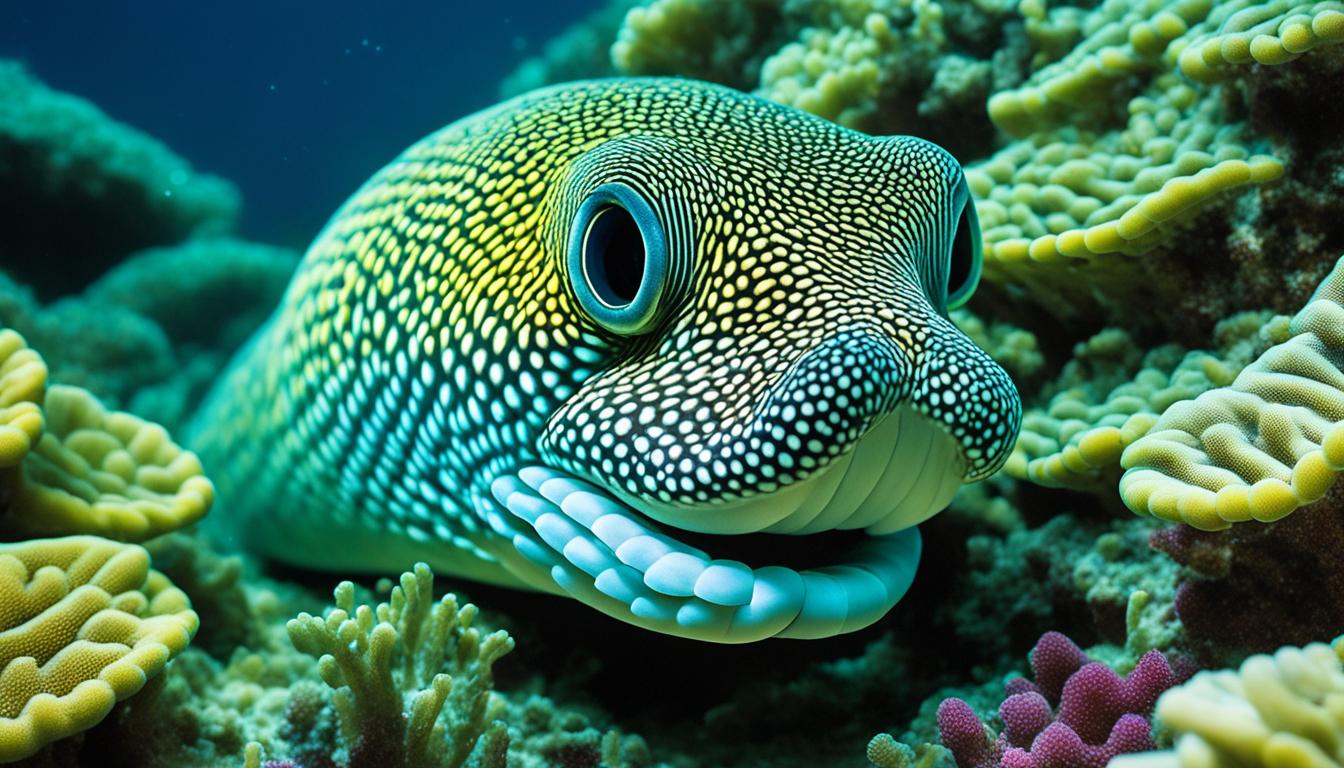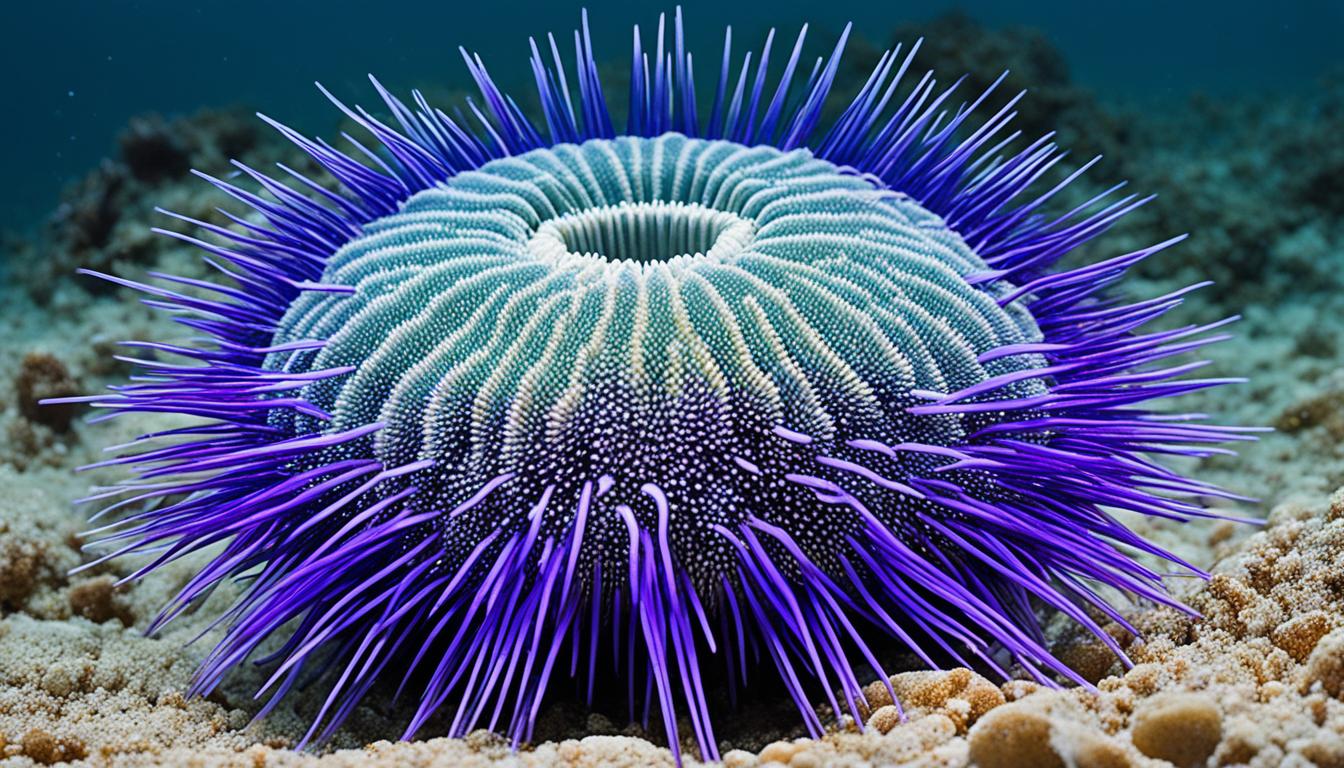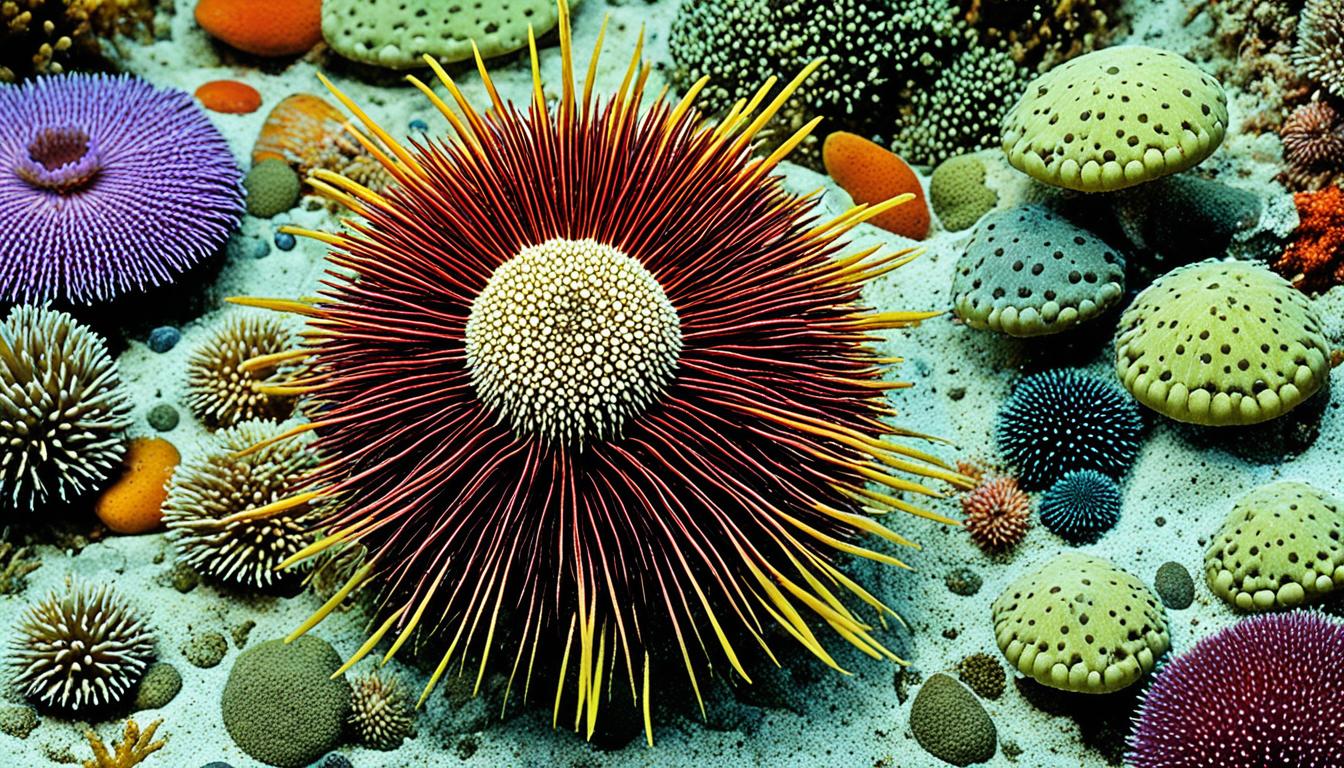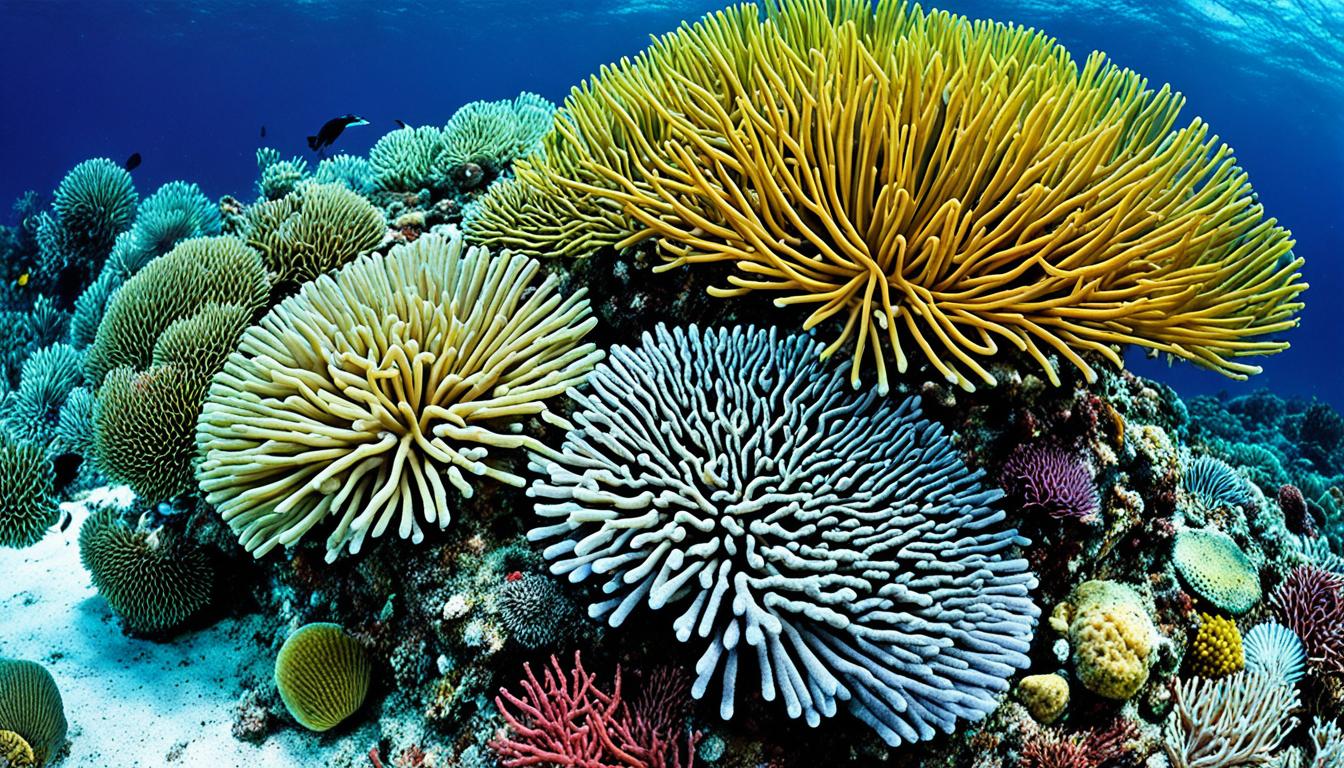Ever wondered how do moray eels breathe? It’s a question that opens up a world of fascinating facts about their moray eels respiratory system. These creatures, found in tropical waters, have special ways to breathe underwater. Unlike other fish, they don’t have bony gill covers. Instead, they use their mouths to help pull in water and get oxygen.
This method of breathing helps clear up myths about their aggressive nature. It shows how they can live in different underwater places. It’s a key part of their biology and survival.
Understanding the Respiratory System of Moray Eels
The moray eels’ respiratory system is quite interesting. It shows how they can live in different marine places. They don’t have gill covers like many fish do. This means they have to breathe in a special way.
They breathe by pumping water manually. They use their muscles to pull water into their mouths. This water then flows over their gills, letting them get the oxygen they need to live. These special ways of breathing show how they’ve adapted to their underwater homes.
Learning about the moray eels’ breathing system helps us understand their life underwater. It shows us the amazing features they have for breathing. And it tells us how they always need water moving to breathe well.
How do moray eels breathe?
Moray eels have a unique way of breathing that helps them survive underwater. They take in water and use their special gills for breathing. This section will explain how they do this.
The process of water intake through the mouth
Moray eels start by sucking water into their mouths. They do this by opening and closing their mouths in a rhythm. This action creates a suction that brings water in. This method makes sure they get enough water to their gills for breathing.
This process is important for exchanging gases and keeping their breathing working well. It’s especially useful when oxygen levels change in the water.
The role of gills in moray eel respiration
After water goes through the mouth, it reaches the gills. These gills are key for taking in oxygen. Moray eels have gills that help them get oxygen well, even in murky water.
Their gills have filaments that make more surface area for gas exchange. This helps them take in oxygen and get rid of carbon dioxide.
| Feature | Details |
|---|---|
| Water Intake Method | Oral suction through rhythmic mouth movements |
| Gas Exchange Location | Gills |
| Adaptations | Specialized gill structure for optimal oxygen uptake |
| Habitat | Coral reefs and other varied environments |
Moray eels’ breathing process shows how they’ve evolved to live in different places. Their way of breathing is key to their survival in various environments.
Moray Eels’ Unique Gill Structure
Moray eels have a special gill setup that helps them breathe underwater. This setup lets them live in different water environments. It makes them good and tough predators. Knowing how their gills work helps us see how amazing these creatures are.
Moray eels don’t have the usual fish gills covered by bones. Their gills are made of a fine framework. This setup helps them grab oxygen from the water well. The moray eels gill structure is perfect for places where oxygen levels change a lot.
Here are some key things about the moray eel’s gill structure:
- Streamlined shape to reduce water resistance.
- Increased surface area for enhanced oxygen absorption.
- Partitions between gill filaments that aid in efficient water flow.
These features help moray eels breathe well, even in murky water with low visibility and oxygen. Their detailed gill design shows how well they adapt to their underwater world.
| Characteristic | Description |
|---|---|
| Gills Shape | Streamlined for fluid dynamics |
| Surface Area | Maximized for oxygen absorption |
| Water Flow | Facilitated by internal partitions |
| Oxygen Efficiency | Effective in low oxygen environments |
The gill structure of moray eels is more than just interesting. It shows their long history of evolution. This lets them live in many kinds of water, showing nature’s amazing design. Learning about their gills helps us understand moray eels better.
Breathing Adaptations of Moray Eels
Moray eels have amazing moray eels respiration adaptations that help them live in different water environments. These features are key for breathing well, especially in places where the water is murky or moves slowly.
Manual water pumping technique
Moray eels can pump water manually, which is a big deal for them. They use their muscles to pull water into their mouths. This makes sure they get enough water over their gills for breathing. It’s super important for them to do this in places with little oxygen.
Oxygen intake efficiency in murky waters
When the water is murky, moray eels have ways to get more oxygen. They have special gills and a bigger surface area for breathing. This helps them a lot in places like coral reefs, where the water quality and flow can be tough.
The Role of Mouth Movements in Breathing
Moray eels move their mouths a lot, which is key to their breathing. You might see them open and close their mouths often. This action helps them breathe and isn’t a sign of aggression. It changes how we see their nature.
Why moray eels appear aggressive
Many think moray eels are aggressive, but that’s not always true. Their mouth movements help them breathe. They take in and out water, making it seem like they’re being hostile. But really, they’re just breathing.
Breathing rhythm and behavior observations
The way they breathe affects their behavior too. For example, how often and deeply they breathe can change how they eat and react to threats. Watching them closely shows how their breathing and actions are connected. This helps us understand their place in nature.
| Behavior | Mouth Movement Synchronization | Impact on Feeding |
|---|---|---|
| Resting | Minimal movement | Reduced feeding |
| Hunting | Rapid opening and closing | Increased feeding success |
| Fleeing | Erratic movements | Possible reduction in intake |
| Interacting with other moray eels | Synchronizing with peers | Social feeding behaviors |
Comparative Analysis of Fish Respiration
Different fish have their own ways of breathing, showing how they adapt to their environments. Moray eels have special ways of breathing that make them stand out. Unlike most fish, they don’t use gill covers to breathe. Instead, they pump water manually, making their breathing process more complex.
Looking at how different fish breathe shows us how they’ve adapted to their homes. Some fish have special features to help them get more oxygen, which is crucial in places with little oxygen. Here’s a look at how various fish breathe:
| Fish Species | Respiration Method | Habitat | Efficiency |
|---|---|---|---|
| Moray Eel | Manual water pumping with unique gill structure | Coral reefs | High in murky waters |
| Goldfish | Gill cover mechanisms | Freshwater lakes | Moderate |
| Tuna | Criciform gill system | Open ocean | High |
| Catfish | Skin and buccal respiration | Muddy rivers | High in low-oxygen environments |
This look at fish shows us the amazing variety in how they breathe. It shows how different fish have found their own ways to survive in their underwater worlds.
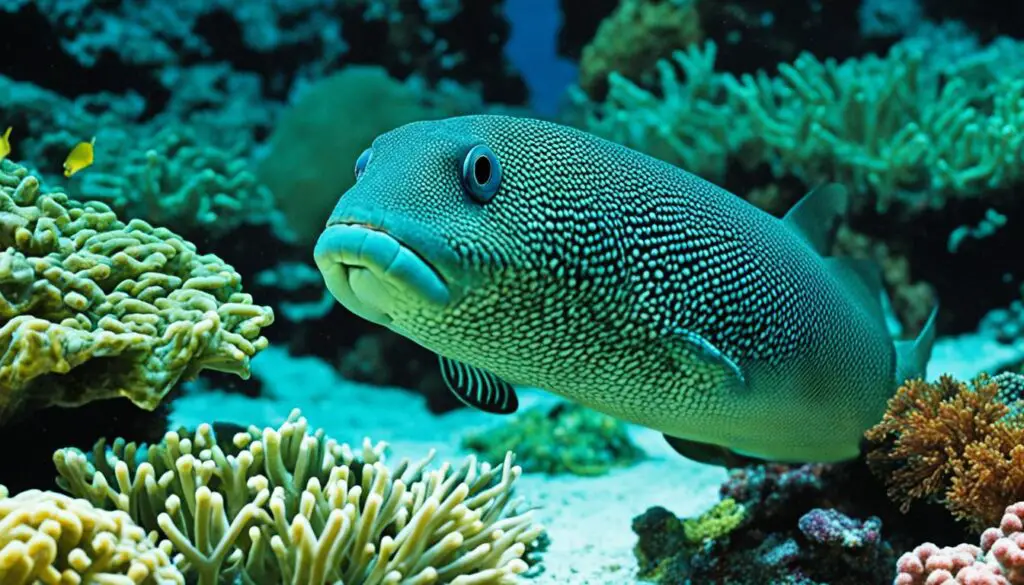
Moray Eels’ Natural Habitat and Its Influence on Breathing
Understanding where moray eels live is key to knowing how they breathe. They live in places like coral reefs, mangroves, and tidal creeks. These environments affect how they breathe.
In coral reefs, the moving water helps moray eels breathe better. This water flow brings in oxygen-rich water. It helps moray eels breathe efficiently, showing how well they adapt to their homes.
Coral reefs and water flow dynamics
The moving water in coral reefs boosts moray eels’ breathing. This water brings in oxygen, helping them breathe well. It shows how they’ve adapted to their surroundings.
Adaptations to different aquatic environments
Moray eels also live in places like mangroves and tidal creeks. They change how they breathe based on the water. This shows how important their homes are for their breathing.
Each place they live affects their survival and their role in nature. Their homes are key to their survival and how they interact with their world.

